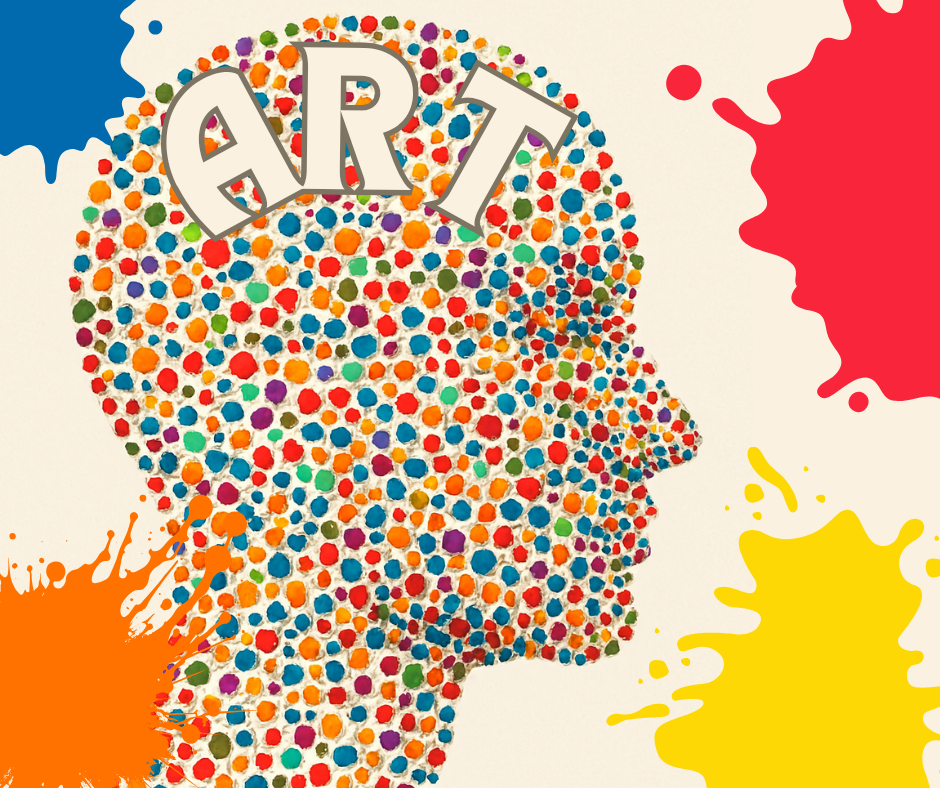NEUTRALISM - THE LATEST MOVEMENT IN ART
- ROMARTIKA CORRESPONDENT
- Aug 28, 2021
- 6 min read
Updated: Aug 29, 2021
We interviewed Portuguese artist João Pedro Marques about his neutralist paintings. Neutralism, being one of the latest movements in the global art scenario, we wanted to understand the nuances of the same. Thirty-two-year-old João is one of the youngest proponents of the latest art movement founded by the veteran artist, Francesco Perili.
Romartika – Tell us about your journey into the world of art.
João – My first exhibition was a contest in Gaeta (Italy) called GaetaArt 2012. I was the winner of the contest. After that I participated in several exhibitions and contests in Italy. In Portugal, I started to exhibit since 2014.
Romartika – Tell us about your painting style.
João – I am inserted in Abstract Expressionism and Neutral-ism Styles. I am also influenced by surrealism and neo-expressionism. I use the psychological mechanism of projection versus perception while I paint. My creative process has 2 stages:
1º stage is about chaos and intuition. I just throw and pour ink on the surface, moving, finding a way to follow to next stage…
2º stage is the rational order and the action of giving shape. I shape some objects,figures… that I can project and perceive on the painting. And this is when the viewer says, “I see something like…” looking at my painting!
Romartika – What is your view about the modern ways in the world of art?
João – I see a conflict between the elites of the world of art and the new generation of artists. The social media is crammed with art works that makes me tired. Always the same old stuff. Everyone paints and display their works on Facebook or Instagram. And the market fails to filter good art from not so good ones because the criteria is based on saleability. The market grabs the works of the famous and already known. How can the newcomers get their foothold then?
In my opinion, what matters is the visceral and reflective element of the art. It is the expression of the artist and the reaction of the observer that counts. When these aspects are evident, I call it GOOD ART!
Also, it is difficult to be original in a world full of contemporary art movements where everything can be labelled of another “ism”. Many times, we can see a dead master hidden beneath layers of paints of a new painting (like Salvador Dali for surrealism and Jackson Pollock for Abstract Expressionism as example).
The only way to be original is to use the useful and reject the useless and add your own, as Bruce Lee said. But often it will fall under the banner of some “ism” or the other.
Romartika – Tell us about neutralism.
João – JPM- Neutral-ism is an internathional art movement founded by Francesco Perili, an Italian artist. Neutral-ism is the answer to the unemotional detachment of conceptual contemporary and pre-determined contemporary art movements, where the painting style is devoid of emotion of the artist who creates it. Emotion of the artist is the key element of Neutralism. There are many abstract and informal painters whose art cannot be classified under abstract expressionism because emotion is the driver of their expression. There comes neutralism.
One of the aspects of the Neutral-ism is multiculturalism. Varied cultures can be part of the movement after a rigorous artistic selection. However, a neutralist painting is hard to label because it can have traits of abstract expressionism, surrealism, and even figurative elements. So the emotional element felt by the beholder is the factor of differentiation. It is organic and visceral. Neutralism can be country specific. Artists of a specific country can voice the spirit of neutral-ism and spread the movement further. Organizing neutralist exhibitions is a great idea. The Neutral-ism Museum is based in Nereto (Italy) where paintings of several neutralist artist are displayed. Neutralists are spreading across the globe in the modern days.
Romartika – Tell us about the background of Neutralism.
João – I don´t really know precisely, but about eight years ago that the first neutralist exhibition was done. The background, as stated by Artist Francesco Perili, is an art movement to replace the emptiness of contemporary art with a humanistic concept and multicultural approach. It is still a very fresh art movement. I already participated in four neutral-ism exhibitions in Italy and Spain since 2017.
Romatika- How did you become involved in this movement?
João – I just saw the Neutralism page on Facebook and got in contact with Francesco Perili showing my paintings to him and my interest on the Neutralist movement. My paintings were approved, and I got in the movement. Then I started to participate in the Neutralist exhibitions like many other Neutralist artists.
Romartika – Is the audience open to Neutralism? Usually, every new movement had to face plenty of struggle before being accepted by the people.
João – Since plenty of exhibitions are happening in Italy, Spain and USA, I feel that the movement is well accepted. But still I think many people are not aware of its existence. Usually, it is often mistaken for either of the following categories – abstract expressionism, informalism, surrealism or symbolism. In the coming days, after the pandemic is over, I am confident that Neutralism will spread much faster and wider among the art lovers across the world.
MANIFESTO OF NEUTRALISM – BY FRANCESCO PERILI
Neutral-ism is configured and presents itself as a multiform artistic movement, innately eclectic, driven to bring together the widest range of tendencies, even those that are opposing, though not for that reason irreconcilable; it expresses and redeems the malaise created by intense contemporary incomprehension and the thousands of fertile divergences that spring from the encounter with, or the forced or spontaneous coexistence of, different cultures. It is founded on the vital presence of differences.
Neutral-ism places at the centre of this dialogue or intermirroring of different cultures its neutral and universal Ism in order to produce a civil and expressive encounter between these differences, which are valuable because they address, and perhaps even resolve, the issues posed by intercultural exchange, and the contaminations and metamorphoses of a world by now globalized. Neutralist Art serves as the flexible and patient balancing point between the detached and excessively superficial venture of pure conceptualism and the arduous and intricate nexus of informal art.
Neutralist Thought thus positions itself in a polemical relation to all contemporary work that has privileged and elevated concept over emotion. It is because of this that the Neutralist Movement distances itself from frigid, purely conceptual art that lacks any direct imprint of the maker. We hold, in fact, that a work realized and forged through the use of reason alone is deprived of its fundamental framework and constitution, which is a humanistic one... Only the artist is capable of transferring this humanistic component to a work through his or her intervention as creator, independent of any theoretical or concrete obligation, or worse, any technical or technological prosthesis that prevents the artist from fully transferring or revealing the emotive component of the senses and the feelings associated with them. Art is emotion, an eternal human gesture: everything else is but a bizarre form of experimental communication.
Neutralist Art also distances itself from so-called informal art, which seeks to deny the value of all artistic intuition or practice that would involve the luminous filter of reason.
In contrast to informal art, which in fact empties the work of any formal allegiance or value enthroning, rather, the antithesis of form itself- Neutralist work represents the inverse, a process of wearing down, canceling, disfiguring, or blunting the contested form (because it might not be shared or found worthy of being perfected, or worse, dismissed as obsolete or out of date) but in a constant and progressing evolution. Working in a post-formal condition, forma mentis, and even habitat, the Neutralist artist will insist on and travel in the direction of a tempered, neo-formal, neo-humanistic, metamorphic, and universal language. With regard to the two opposing, established approaches, one embracing pure conceptualism, the other informal art, the neutralist position supports a choice in which instinct and reason comprise and together guide the work - together because the absence of either would deprive the work of the humanistic state of mind of the author, stripping the message of concrete intellectual worth. Thus Neutral-ism shuffles the deck, ballasts the negative attributes and forms of languages whose expression has been institutionalized or scleroticized, and sweeps away any dogma that could pose an obstacle to dialogue. It sustains a past that projects into the future and a future that sinks itself into the past, in a universal, diachronic, and remixed history where the values that permeate us most can be reinterpreted, reshaped with a freedom of intent and language, made equal among the range of different artistic and cultural possibilities.
The Neutral-ism movement does not consider to be truly artistic those experimental dynamics and forms of communication today approved as works of art and which remain no more than obsolete and simple-minded assemblies of photos, video, costumes, design, performance, or pseudo-installations where the presumed creator becomes a director or architect of extravaganzas, chatter and debate, elegant or up-to-date inanities that have been hatched by millions of self-styled artists, acolytes of Emptiness; and where tailors, designers, advertisers, creative industrialists, have illegitimately invaded and occupied the museums, mangling the very meaning of a Contemporary Art too often reduced, alas, to the luminous, desublimated self-referential contemplation of merchandise. We reject the conformist identification of the work of art as a product to be consumed, pure and simple, by now stripped of its necessary qualities as a social good and a vessel of lay spirituality.
Not everything can become- art, because if everything can be art, then nothing can be Art, which has never been, nor can now be reduced to, or theorized into, an elegant receptacle or dynamic, all-expressive container into which you can introduce, park, or dump every type or scrap of tedious acclaimed frivolity.














Comments